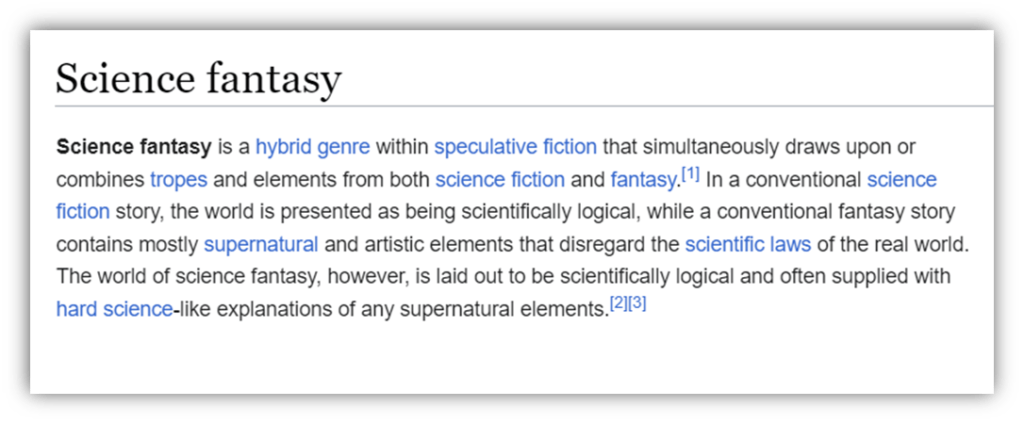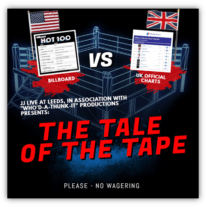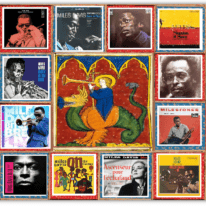Just like Douglas Adams before me, I’ll spurn any sense of numeracy and present part five in a four-part series on science fiction subgenres.
In previous installations in this series, we’ve covered:

- And Hopepunk
But of course, that leaves many other sci-fi subgenres out there just left hanging. As the Black Eyed Peas might say, “Where is the love?”

Fear not, intrepid companions! While I do not have enough experience to write full columns on other flavors of sci-fi, I’ll share some examples I have been exposed to and maybe give you a hint if that’s a direction you would want to pursue.
Sci-Fi Horror
You may have guessed from my Evil Dead 2 article that I’m a pretty big horror fan, too. And there is some ground to cover in the blending of science fiction and horror. Like with sci-fi comedy or horror comedy, taxonomy is important.

There are plenty of horror novels with just a touch of sci-fi for effect – think pretty much any zombie apocalypse story (e.g. The Girl with All the Gifts). And there are sci-fi stories with a few horrific elements – Dune has some pretty chilling imagery, but it’s not really a horror novel per se.
The novel I think really captures the perfect mix to epitomize sci-fi horror is Dan Simmons’ Hyperion (1989.

It still stands as one of my favorite books of all time, some 25 years after I first read it.
Its follow-up, The Fall of Hyperion (1990) is essential reading as well. [I’m a bit more lukewarm on the two other sequels – Endymion (1996) and The Rise of Endymion (1997).]
Hyperion tells the story of seven pilgrims journeying to the Time Tombs: a place where time flows both forwards and backwards, to confront a terrifying creature known as the Shrike, which guards the tombs. Structured like The Canterbury Tales, each pilgrim gets his/her chance to tell their own story during the journey. The chapters are named the Priest’s Tale, the Soldier’s Tale, the Poet’s Tale, etc… Each chapter is its own self-contained little universe and stands alone as a compelling story in its own right.
But all these stories, and the greater journey the pilgrims are undertaking, pivot on the unknowable Lovecraftian horror of the Shrike. A creature that impales its victims on a tree with razor branches. The novel Hyperion pretty much is just these separate pilgrim’s tales, with some action in between to keep some momentum, but the novel is almost entirely experienced in flashback.
The Fall of Hyperion weaves each of these characters and their backstories into a ponderous contemporaneous progression of events involving AI characters, governmental conspiracies, and fate-of-humanity consequences. It’s truly a lot of balls to juggle, but Simmons pulls it off commendably.
What I really wish I could project into your brain, dear reader, is that sense of foreboding and dread that fills the pages. The sense that something truly soul-crushing is just on your periphery, waiting to strike, invisible but ever present. The real miracle of Hyperion is its ability to take a sci-fi plot and make it give you goosebumps.
Climate Dystopia
Dystopian novels in general usually are at least somewhat sci-fi in nature, and cover a wide range of examples. However, more recently many dystopian novels hinge on fleshing out what the world will look like in our climate-altered future. Many of these novels lean toward more hard sci-fi elements, while also embracing some amount of speculation.
Paolo Bacigalupi’s The Windup Girl (2009) and The Water Knife (2015) give a hard edge to what our near- to intermediate- future could look like on a climate-altered planet corrupted by late-stage capitalism.
The Windup Girl takes place in 23rd century Thailand.

Sea level rise has caused many coastal cities to be partially submerged. An agrichemical company has created a virus that has decimated nearly all world’s crops, making the world dependent on the genetically modified resistant crops the company has engineered. Fossil fuels essentially no longer exist, so energy is stored in kink-springs, which can only be manufactured through the efforts of supergiant elephant labor.
The dung of these elephants becomes an important source of energy in the underground economy, ruled over by a local mafia organization (the “Dung Lord”). In this setting, a factory owner meets a “windup girl” – an illegal sex cyborg abandoned in Thailand, who is herself living a marginal existence trying to understand herself beyond her programming.
The tone of the whole story is dark – the world seems to be entirely populated by victims and predators, and each person has the capacity to be both. But the point that Bacigalupi is making is that this is the world we are creating – economic engines work overtime to satisfy the rich and powerful, and no one else matters except as a resource to be extracted for their benefit. Yes, climate change will make everything worse, but our short-sightedness and deference to a system that’s not working in our interest is what caused us to lose sight of the problem and let it escalate in the first place. The novel is not utterly hopeless – it does end on something of a grace note, but not because anything is changing more than a couple of people finding and helping each other.

The Water Knife shares the pessimism for the future Bacigalupi demonstrated in The Windup Girl, but changes the setting and the stakes.

Set in a much nearer future – a few decades from now – in the United States Southwest, the heart of the novel is water (or the lack thereof). Decades of super-drought has rendered water an extremely scarce resource, and senior water rights are more valuable than diamonds.
Water is under corporate ownership, and anybody who attempts to access water outside of that context will suffer both legal and violent consequences. The law and mercenaries work hand-in-hand to ensure “illegal” water supplies are cut off, no matter the consequences to the people who need it to live.
The primary characters are a “water knife” – a covert operative working for the water authority who will bomb a water system that is not under their control, an East Coast journalist covering “collapse porn” in the Southwest just as people now may cover Detroit, and a pair of climate refugees from Texas who make their way to Las Vegas through increasingly desperate travails. Again, trust is hard-earned and rare, and everyone is both victim and a predator to survive. Like The Windup Girl, this novel makes a pretty clear statement about predatory capitalism and climate consequences. Both are dark but engaging to read.


Paolo Bacigalupi writes compelling stories, but they can be pretty bleak.
If you want more of a curveball in climate dystopian fiction, I’d suggest Margaret Atwood’s MaddAddam trilogy.

I certainly don’t want to suggest these books are sunshine, lollipops and rainbows, but they temper the grim with the hopeful.
And you should know Margaret Atwood never disappoints:

- Oryx and Crake (2003)
- The Year of the Flood (2009)
- MaddAddam (2013)
Science Fantasy
The genres of science fiction and fantasy are often lumped together, but hardcore fans of either generally eschew lumping them together.
It’s like when I was younger: record stores (remember them?) would put jazz and blues together in the same section.

That’s some really reductive thinking to assume that jazz and blues are the same thing (don’t get me started), and similarly, lumping together sci-fi and fantasy rubs many people – myself included – the wrong way.
If you’re maybe not entirely clear what’s the difference between science fiction and fantasy, I’ll provide this quote from Jericho Writers that sums it up nicely:
“The main difference between fantasy and science fiction is that fantasy deals with the impossible, whereas science fiction deals with the possible.
Fantasy features magic and monsters, the realm of the imagination, and science fiction is grounded in scientific principles.
Both genres need internal consistency and logic, but in fantasy, the writer creates the rules, whereas, in science fiction, nature and physics dictate the rules.”
https://jerichowriters.com/science-fiction-vs-fantasy/
So in a nutshell, the difference between a dragon and an alien is the backstory – is there an attempt to make the creature exist in our understanding of science, physics and the universe?
Of course, like anything, there’s never a perfect line that can be drawn between the two genres, and authors frequently like to blur the lines. So there is such a thing as “science fantasy” – as defined by Wikipedia:

“As a combination of the two, science fantasy gives a scientific veneer of realism to things that simply could not happen in the real world under any circumstances.”
“Where science fiction does not permit the existence of fantastical or supernatural elements, science fantasy explicitly relies upon them to complement the scientific elements.”

From 2016 to 2018, N.K. Jemisin pulled off an unprecedented trifecta when all three books in her Broken Earth trilogy won the Hugo Award for Best Novel in consecutive years.
There was some controversy at the time because a small but loud cohort of angry white men tried didn’t want a black woman to win this prestigious award for writing a queer- and trans- positive story. Those jackasses’ opinions merit no further consideration.
Jemisin’s award-winning Broken Earth trilogy quite neatly falls into the science fantasy box. There’s enough science to sink your teeth in, but enough that’s really beyond scientific explanation to fit into the fantasy range.

- The Fifth Season (2015)
- The Obelisk Gate (2016)
- The Stone Sky (2017)
The Broken Earth series takes place on a planet with a single supercontinent, that experiences catastrophic climate change on a recurring basis (the “fifth season” in question). The planet has a small number of people who are “orogenes” – who have the ability to control energy, particularly within the ground, a power which can easily kill people nearby if not well-controlled.
They are tightly controlled by “guardians” who keep them on a short leash. As a new cycle of climate crisis emerges, The Fifth Season tells the stories of Damaya, a young girl discovering she has orogene powers, Essun, a middle-aged woman pursuing her husband after he killed their son and abducted their daughter, and Syenite, an up-and-coming trained orogene, forced to have a child with a higher ranked orogene despite their mutual loathing.

The later books build out a story of people with powerful abilities attempting to restore balance to the planet and end the cycle of fifth seasons, against the will of other powerful forces. The apocalyptic climate change and its effects on society are very sci-fi, while some of the magical powers that come to be understood are definitely more fantastical.
Sci-fi fans and fantasy fans alike have a lot to enjoy, and while the story is largely pretty dark, the “found family” themes and openness to every type of person give it hopepunk vibes at times.
There are many science fiction subgenres I could not cover for lack of time or lack of exposure (e.g. cyberpunk, military sci-fi, time travel, zombies, alternate universe, steampunk, etc…). And really, very few works of science fiction fall cleanly into a single category – they may resemble several different subgenres at once. The more the merrier I say! There are so many universes out there to explore, I wish I had access to some sci-fi solution so I could live hundreds of years and read all these wonderful books. Or maybe I should be careful what I wish for…

Final call in the comments for any and all sci-fi recommendations you’d like to share that you didn’t in the previous installments.
I am always looking for new material to devour before my glasses shatter.
End of series.
Let the author know that you liked their article with a “Green Thumb” Upvote!








Well Pauly, you’ve done it. You’ve pushed me to finally read a Margaret Atwood novel. Not that there was any good reason not to. It’s just JJ’s Law of Leeds. But your post here has inspired me to boldly go one step beyond my usual hesitation.
I just ordered “Oryx and Crake.” Now I’ll have to read it with the so-named tracks by the Knife playing on a loop. Or not. Probably not.
What do you think of George R. R. Martin’s A Song of Ice and Fire series? I hate what the HBO show runners did with the story (and have since Season 1), but I love the books. Martin wrote science fiction stories for most of his career, though he has always been a firm believer that genre is meant to be toyed with.
Some of his old sci-fi stories feel like straight up fantasy, and pretty much all of it has a strong element of horror: gothic gloom, eldritch madness, or both.
And Song of Ice and Fire is no exception. It’s set in a world with cultures that are some blend of medieval and early Renaissance signifiers of knowledge and technology, but for the most part, the world is stable and rational for the noble class. As you described, the supernatural elements are unexplained and unexplainable to those who witness it–and those forces threaten to topple that old rational world for good. So it is primarily a fantasy (albeit of the low magic variety), but there are some strong elements of horror as well. And also maybe some sci-fi for careful readers, but that’s partially my own theory.
And we’ll probably be living in a world that resembles sci-fi before I will be able to confirm or disconfirm my theory, as the gap between Books 5 and 6 is 13 years and counting. And then there’s Book 7…
Anyway, thanks for the great miniseries Pauly. I’ve got a whole ton of books to check out.
Nanu Nanu!
Awesome!!! I hope you enjoy it as much as I did! I’ve read several works by Margaret Atwood, and what always amazes me is that she has something meaningful to say, but she doesn’t telegraph the story. I couldn’t predict what would happen next, but the progression was always plausible and hit me in unexpected ways.
Now I will reveal I have read no George R.R. Martin, though I did watch the entirety of Game of Thrones on HBO. Like I had barely read any of the Big Three, it’s kind of a blind spot for me. I always thought of him more as a fantasy writer. Honestly I read very little fantasy, though I have recently gotten into Rebecca Roanhorse’s Between Earth and Sky series. Those novels (Black Sun and Fevered Star, third novel coming soon) are set in an entirely new Mesoamerican mythology, and are quite the treat!
Given that he is known primarily for the ASOIAF series (and rightly so, it’s his best work so far), it makes sense that people think of him as a fantasy writer. Martin himself has said that, whether it’s horror, sci-fi, or fantasy, it’s all weird fiction to him. What he cares about most is what Faulkner cared about: the human heart in conflict with itself.
I am not really a fantasy person myself. I read the Shannara series in elementary school. I read The Lord of the Rings, The Chronicles of Narnia, The Neverending Story, The Last Unicorn, The Princess Bride, and Howl’s Moving Castle (all better than their respective mostly good films). And Stephen King’s In the Eyes of the Dragon. But that’s pretty much it.
I am currently 2/3s of the way into Tad Williams’ Memory Sorrow and Thorn trilogy. It’s more high magic than I prefer, but I like the character writing, the prose, and the themes he’s been building so far.
Love the Mostly Harmless reference in your opening. When I first saw that book with the tag line on the cover ‘The fifth book in the increasingly inaccurately named Hitch Hikers Guide To The Galaxy trilogy’ I knew I was in safe hands.
I’ve got no recommendations but I am about to start The Ferryman by Justin Cronin. Not read any of his previous work but I do like a bit of dystopia and saw it mentioned in a number of end of year lists for 2023.
One review says ‘that the plot twists push it into the realm of provocative conceptual science fiction’.
We shall see. It’s a lengthy one so I may be a while.
Let me know what you think about Justin Cronin, JJ. I am keeping a list of all the recommendations and putting them on my “to-read” list. Always looking for a new author to binge.
I finished The Ferryman. Its my daughters fault, passing on her germs so I had some downtime to fly through it.
Disappointing is my one word review. I’d say it fits in the space opera bracket, though it’s set on Earth. Or a version of Earth. There’s a dystopian element to it which comes more central to the story as it goes on. The science behind it is largely left unexplained and its as much about the relationships as the increasing certainty that all is not as it seems.
One of the quotes inside the cover claims that is a ‘transcendendant meditation on the human condition, delivered through gorgeous prose, characters who steal your heart and riveting storyline.’
Which is the exact opposite of my take. I found the characters unlikeable and the prose leaden which further served to keep them as barely two dimensional renderings. I was not riveted though the fact I finished it must mean something. My feeling is that it borrows common tropes from existing stories and tries to blend them together into something new and meaningful. I guess there’s only so many stories to tell but it felt telegraphed.
Not one that I can recommend for your to-read list then. Can’t win ’em all.
Understood JJ, you can’t win ’em all… I got Cloud Cuckoo Land by Anthony Doerr last year, similarly enticed by the description, only to be quite disappointed by the results. Unless I write a column about books I dislike, you won’t be hearing more about it.
Someone else I thought I would like but really COULD NOT STAND was Alan Moore (I think Phylum quoted him recently — sorry dude for slagging the fellow). Dude is so impressed with himself, and he doesn’t trust the reader one iota so he overdescribes EVERYTHING. Keeping my distance from that pretentious gasbag. Your mileage may vary…
As you might have already guessed, I have a high tolerance for pretentious gasbags! I think it’s a fair criticism of Moore that he doesn’t always trust his readers, so he can explain too much. Out of curiosity, what did you read of his?
I think part of why I like Promethea so much is that the whole premise is nakedly didactic, so it doesn’t pull me out from the story when he goes into exposition mode. And it’s delivered with a wink, so his groaning moments have a sort of “dad joke” charm to them.
Other than that, I did really like V for Vendetta, and From Hell, and The Watchmen. Though they certainly suffer from the principal flaws you’ve pointed out.
Once again, thank you mt58 for taking my words and ideas and making them better than they have any right to be! Bravo Zulu to you good sir!!!
…
I clapped like the dork I am when Zoe Saldana revealed herself to be a Trekkie in Steven Spielberg’s The Terminal.
Alien is my favorite sci-fi/horror mash-up. I never understood the lukewarm reception for Prometheus. It made me want to rewatch Alien.
The Arrival is the only sci-fi film I can think of that matches your climate dystopia category. The presence of Charlie Sheen prevents the film from entering the science fiction canon. People probably have a hard time buying Sheen as a radio astronomer. His co-star is Richard Schiff. Schiff’s character believes Sheen is a radio astronomer, so I believe it, too.
I predict Margaret Atwood will win the Nobel next year.
“Spock is Everywhere”, or should be.